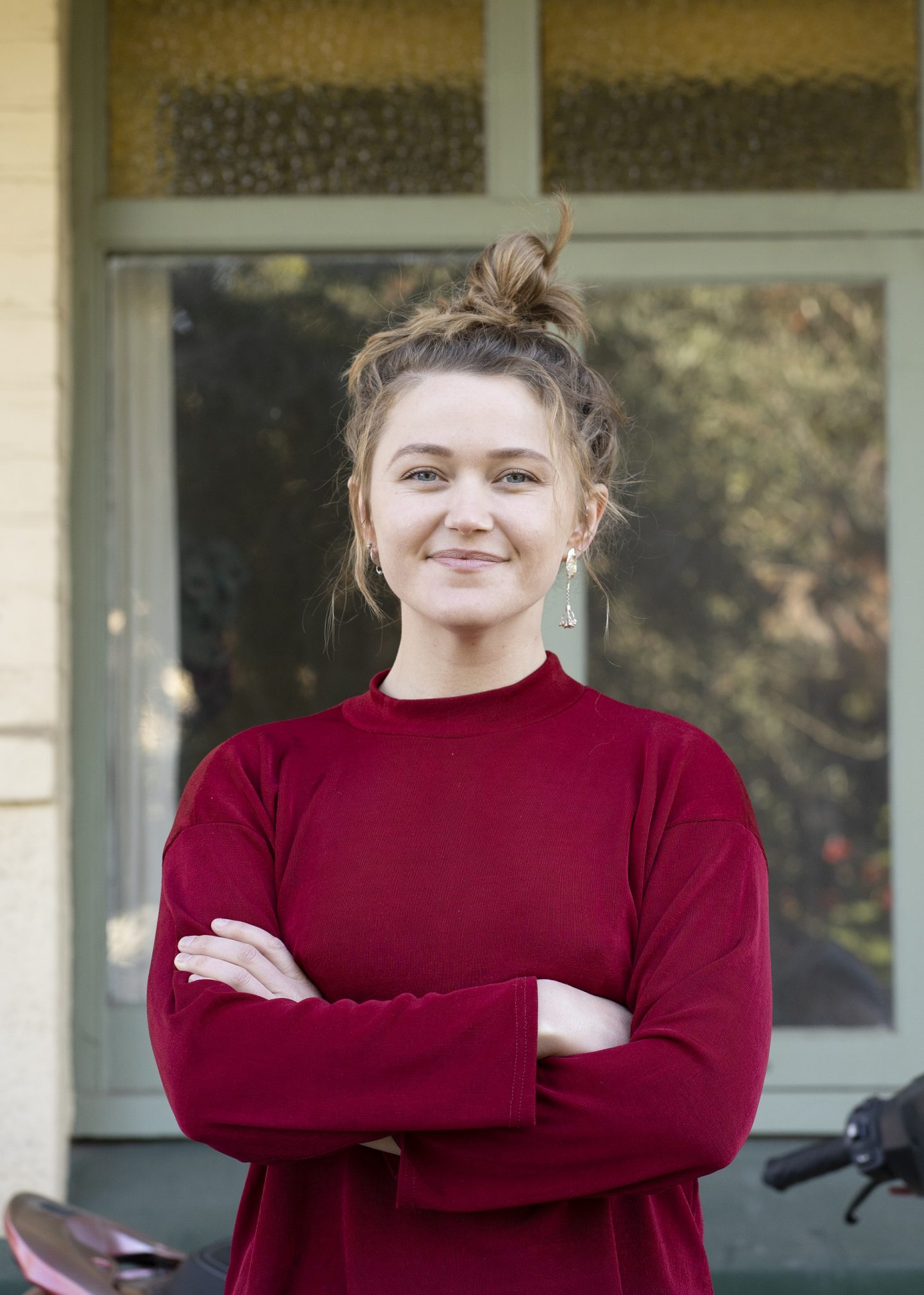Frances Rogers considers herself fortunate that the global pandemic didn’t interrupt the trajectory she has been on since graduating last year with a Bachelor of Contemporary Arts from the University of South Australia.
Earlier this year her work featured at the Helpmann Academy Graduate exhibition where she received the JamFactory Award, a 12-month mentorship program that she is currently undertaking. In August she started the six-month Helpmann Academy George Street Studios Residency.
“Working at the George Street Studios has opened up new opportunities – I can think bigger because there is so much space there,” says Rogers. “It’s also great to be around other artists and have different influences.”
Last month Rogers’ solo exhibition, Future Fossils, was held at The Mill in Angas Street and featured works that explored notions of shelter and architecture and how they can affect our wellbeing and sense of identity. Rogers is particularly interested in our changing environment and how fast fabrications and quick solutions to shelter have replaced the sense of building a home and deliberately making a welcoming space.
“For me personally it’s about how I have spent a lot of time travelling and creating a sense of home that [I] know is not permanent and being aware of that in the process,” explains Rogers. “It’s about creating relationships and flimsy living situations that you are going to walk away from.”

Rogers’ practice is concerned with our connection to nature, combining elements of the ancient (clay earth, primitive memory) with the contemporary (formal considerations and sculptural practice). Her sculptural works also reflect the natural and man-made and our connection to both in terms of our urban environment.
Delving into the idea of shelter and space being nurturing, Rogers looks at the womb as an architectural space and reflects this in some of her works that are created using egg cartons.
“I have used egg cartons as a material because they represent life going into these modular shapes and you can think about apartment blocks in the same framework – little spaces to put segments of life [into],” says Rogers.
The egg carton works are created using slip (liquified clay) that is put onto the cardboard and then burnt away so it becomes a shell, like a fossil of what it used to be. This reflects Rogers’ exploration of spaces and the impermanence and memory within them.
Rogers uses clay as her preferred medium, with its multisensory qualities helping her understand the materials we use to construct our environment. This is evident in her chain series, which is made using Raku clay links and a repetitive manual process of connecting circular forms. Playing with the malleability and strength of clay, each link supports the next.
Rogers enjoys the tactile nature of clay and the way you can change it as you go along. “There is a therapeutic sense when you are working with clay, it’s really gentle. I like that you get to play with it in different forms,” says Rogers. “It’s also naturally occurring everywhere – especially in South Australia – and I wanted to highlight this.”
To finish off a busy 2020, Rogers is also working on a public art project with Steven Bellosguardo and Kate Oakenfold for the Helpmann Academy Substation Public Art Project presented by Helpmann Academy and SA Power Networks, in partnership with Arts South Australia and the City of Adelaide, which will be launched at the end of the year.
Related Article
Farewell to
The Adelaide Review
1984 – 2020
Get the latest from The Adelaide Review in your inbox
Get the latest from The Adelaide Review in your inbox